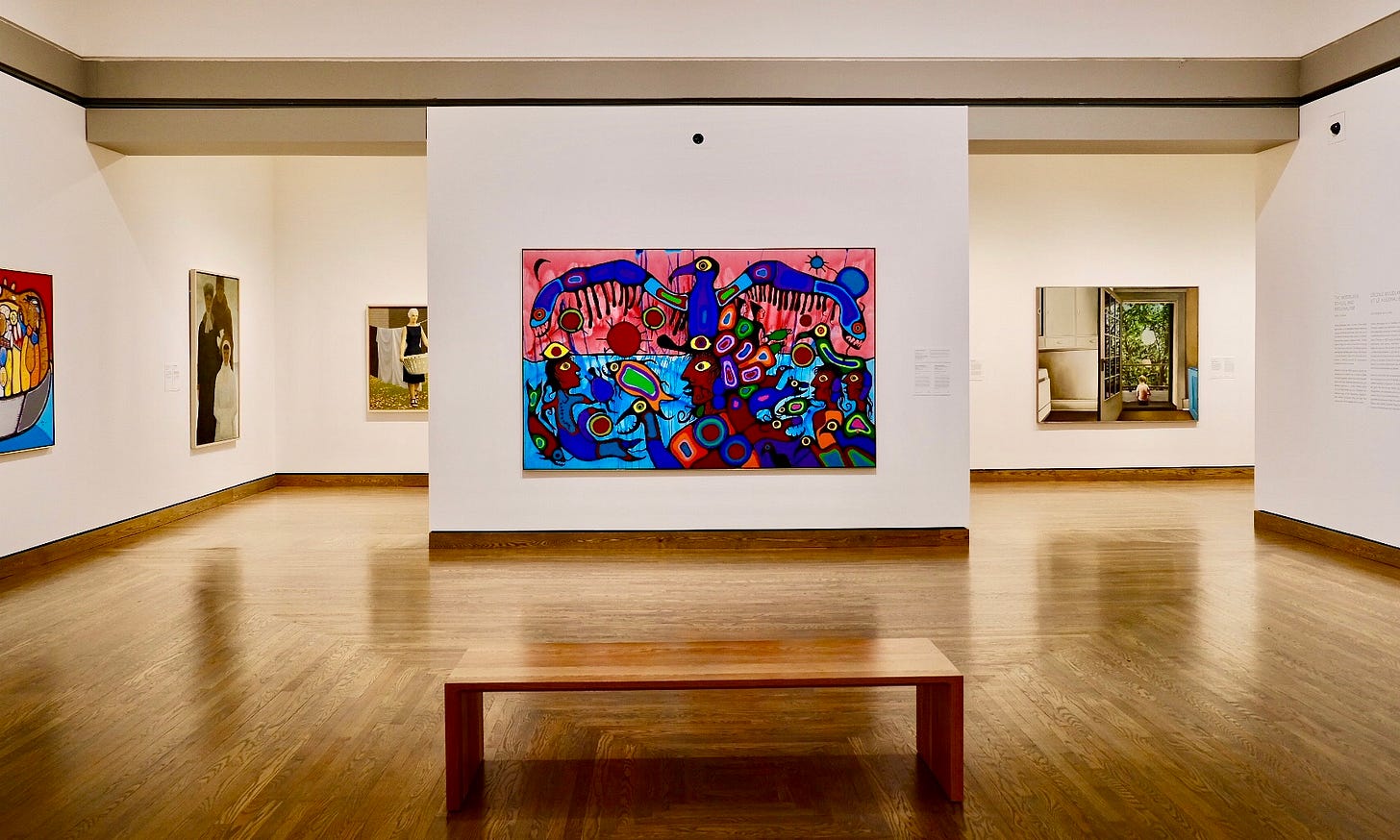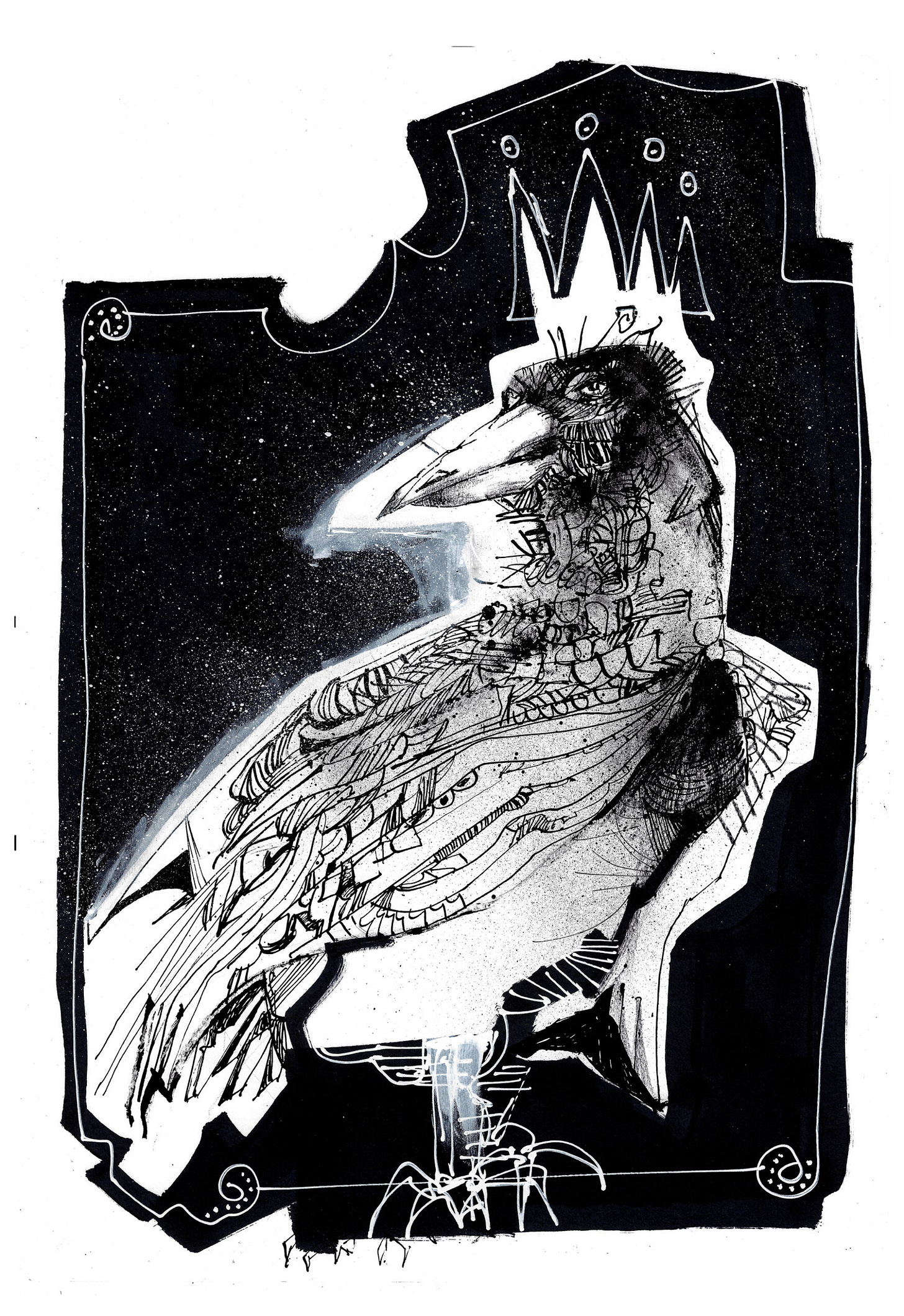I just went down a Reddit rabbit hole and gathered some valuable insights on becoming a full-time artist.
A few months ago, I asked a similar question1 on Reddit about how artists make a living. Recently, I came across another popular thread where someone asked about the "secret" to becoming a full-time artist.
Here is their exact question.
Seriously what the hell is the secret to becoming a full time artist?2
These Reddit threads are fascinating and insightful because artists support one another by sharing their experiences. With contributors from diverse backgrounds, the information can be incredibly valuable when properly curated.
In response to the above question, I will highlight patterns from the most popular comments. People on Reddit use their handles, so I'll reference them when sharing their comments.
Corporate Clients & Art Adjacent Jobs
Many artists rely on corporate or art-related jobs to support themselves while pursuing their creative careers. However, their experiences vary widely—some have found stability and success, while others struggle with burnout and uncertainty.
Royta15 maintains financial stability by working with corporate clients on vector artwork just 3–4 days a month, allowing him to spend the rest of his time on comics and art exhibitions. This balance, however, came after five years of long hours spent building his reputation. He credits his success to long-term thinking.
Similarly, beanie712 also benefits from corporate clients, but in a different way—brands license their artwork for significant sums, using the illustrations on products. In addition, they have taken on mural projects for corporate clients, leveraging their style for large-scale commissions.
For Blabla-potato-king, licensing artwork has also been lucrative at times, with single illustrations selling for as much as $5K. However, the relentless cycle of finding new work, competing with AI-generated art, and navigating social media algorithms has led to burnout. The moment they stop producing, attention fades, and work dries up, making stability elusive.
Meanwhile, Cara-Bina works as a scenic artist, creating backdrops and scenery for theatre, opera, and advertisements. Unlike the others, her employment is tied to productions, so once a show ends, so does her job. However, as a member of two unions, she can rely on union support during gaps in employment, allowing her to focus on her own art while still building toward retirement.
These stories highlight both the opportunities and challenges artists face in sustaining their careers—some find ways to create stability, while others wrestle with burnout and the unpredictability of freelance work.
Hard Work (and multiple streams of income)
While artists often credit their success to hard work, their adaptability and consistency are the driving forces behind making a living from their art.
CaptainLem built their career by selling art every night at a local night market. When COVID hit, they pivoted online, posting two or more videos daily to maintain and grow their audience. They now attend 5–6 high-end art fairs per year and turn their artwork into prints, stickers, and other merchandise. Additionally, they maintain an email list of collectors, keeping them engaged for repeat sales. They call themselves a workaholic—and based on their approach, I’d say that’s an accurate description.
Whyte_Dynamyte takes a different approach, encouraging artists to "keep going until your work is too good to ignore." Having painted since 1997, they finally went full-time in 2021. Their advice? Apply for every residency and grant, work toward getting into a good gallery, and keep living expenses low to sustain the journey.
Jamiedee emphasizes relentless practice and networking. Their formula for success:
“Draw 12 hours a days for ten plus years perfecting your craft. Let every person you know in real life that you draw, and can draw for them, building up a client base and never let up. Post your art everywhere and find a circle of friends who you can trust with critiques and listen to them. Draw draw draw.”
Live somewhere cheap
Artist batsofburden finds it surprising that more artists don’t discuss the financial benefits of living in inexpensive places. Since many artists can sell their work online, their location—NYC or Alabama—often doesn’t matter.
Comment by Whyte_Dynamyte
“I got a sweetheart deal on an apartment and that, more than anything else, enabled me to start painting full time”.
This reminds me of an article I read on Artsy about artists who live in places outside of artistic hubs like NYC, LA, Paris, etc., and are still successful. For example, Merike Estna spent years in London but then moved to Tallinn, Estonia, to develop a new painting technique and lower her cost of living.
Similarly, Ebony G Patterson became a nomadic artist to travel for residencies, research, and exhibitions. Still, she also taught at the University of Kentucky for 11 years and moved between Kentucky and Jamaica, where she was born, to share her work3.
These examples highlight an important reality—while major cities offer networking opportunities, many artists find more freedom, financial stability, and creative growth by living elsewhere.
Don’t be a hobbyist
Ezmoney537’s comment resonated with me.
“Art is a business but is saturated with hobbyists. For every successful artist you see, there are thousands of hobbyists that did not make it as what most would consider successful. I would not say that the successful ones are all rich but more that they have a supplemental income in order to keep grinding till they find success.”
They go on to say that success often comes when an artist gets accepted into a reputable gallery, licenses their work, or builds relationships with designers who buy their art. Otherwise, artists must be highly prolific, have a distinctive style, and—frankly—be lucky.
Artist dextroseskullfyre is not so forgiving with their comment.
First, you need to be very good at what you do. Lots of folks like to toss around the title "Artist" and most unfortunately make things for their Mom's fridge.
Their advice? Build strong, real-world connections—not just social media followers. Having friends who own restaurants, galleries, or boutiques can provide real opportunities to display and sell art. They also warn against get-rich-quick schemes, emphasizing that true success comes from skill and craftsmanship, not shortcuts.
These perspectives highlight the balance between talent, strategy, persistence, and, sometimes, a bit of luck in making a living as an artist.
Niche-in-demand art
Several artists in the Reddit thread highlight how choosing the right niche can make a huge difference in making a living from art.
LadyoftheLiteNite focuses on creating artwork that people specifically want to hang on their walls. Their niche is in high demand with relatively few artists competing in it. By balancing income from corporate clients and online sales, they’ve built a sustainable career.
Himsay696 is a newcomer to painting but has already sold four pieces. They specialize in native woodland art, a niche with a strong market. They credit their early success to stepping into an in-demand artistic style at the right time.

Small-Help1801 shares an example from outside traditional fine art: a luthier who specializes in repairing, restoring, and recreating a specific type of vintage guitar. Despite working in a high-cost-of-living area, their highly specialized skill set allows them to earn a comfortable living.
These examples show that finding the right niche—whether through style, subject matter, or specialized craftsmanship—can be just as crucial as talent and persistence in sustaining an artistic career.
Rich parents, partners, and friends
A recurring theme in the discussion was frustration toward artists who had financial backing from wealthy parents or spouses. Many commenters felt that privilege played a significant role in who gets to be a “full-time artist.” However, the original question—how to become a full-time artist, rather than how to make a living from art—may have fueled this debate, as financial stability is often a major factor in making art full-time.
captian_kirk shared a perspective that resonated with me:
I’ve been a full-time public artist for 20 years supporting a family for the last 13. My wife is in the performing arts, within her field, she’s much better known than I am. But I’ve supported her for over a decade.
Do you think anybody in her field cares? No. My work gets more press, but she gets more respect. She rarely makes compromises, i battle compromise constantly.
Does this mean she’s not a full-time artist? no. But her career doesn’t financially support her.
This comment highlights a key reality: being a full-time artist and making a living from art are not always the same thing. Having a financially supportive partner, parent, or patron can enable an artist to dedicate themselves fully to their craft.
Another comment from Blabla-potato-king adds a refreshingly positive perspective on the ‘rich partner’ theory. (rephrased for clarity)
“I don’t believe in the myth of success as the work of one talent. Every successful artist I see and know—including myself—needed a village. Whether it was financial or emotional support, it mattered. I remember when my dad saved his money to buy me my first Huion tablet—it was the best gift ever, and he was struggling financially, so it meant even more.”
Most of the artists I've covered came from modest backgrounds. Robert Nava grew up in East Chicago, with a father working as a crane man and a mother as a receptionist. Mauricio Cattelan was raised in Padua, Italy, by a truck-driving father and a cleaning lady mother. Botura grew up in Medellín, Colombia, with a seamstress mother and an absent father. Jenny Holzer was from Gallipolis, Ohio, with a car salesman father and a housewife mother. Shantell Martin was raised in Southeast London in a low-income housing project by a single mother and stepdad.
All these references prove that an artist can be successful without the support of their family. However, family support can be helpful and increase one's chances of succeeding in a creative field.
Luck, Trial and Error, and staying the course
This does sound like the title of a play! Artist Cara Bina talks about her clients submitting work to two shows. While one show was a complete dud, the other gave them orders for three years of work.
A lot of other artists mentioned luck. Here is one by Reasonable-Knee-6430
Luck, hard wórk and family money. 2 out of 3 you may be good.
The path to becoming a full-time artist is anything but straightforward. The responses to the original question highlight a mix of persistence, adaptability, financial strategy, and, in many cases, a bit of luck.
Successful artists often diversify their income streams—selling at markets, leveraging corporate clients, or licensing their work. Many emphasize the importance of keeping living costs low, applying for grants and residencies, and continuously improving their craft. Some benefit from family or partner support, while others succeed through sheer determination and years of consistent effort.
Ultimately, there is no singular "secret"—it’s a combination of hard work, smart decisions, and sometimes, being in the right place at the right time.
Here are some top insights from these artists
Diversify Income Streams – Successful artists sell at markets, attend art fairs, license work, and collaborate with corporate clients.
Keep Living Costs Low – Many artists move to affordable locations to reduce financial pressure.
Apply for Grants & Residencies – These opportunities provide funding, exposure, and career growth.
Commit to Continuous Improvement – Years of practice, consistency, and adaptability are crucial.
Leverage Corporate & Art-Adjacent Jobs – Some artists sustain themselves by working for corporate clients, teaching, or taking on related work.
Build a Network – Having connections in galleries, businesses, and online communities helps create opportunities.
Family & Partner Support Can Help – While not essential, financial and emotional support can ease the journey.
Luck Plays a Role – Many artists acknowledge that success often involves being in the right place and time.







Just want to point out that Norval Morisseau does not equate Native Woodland Art. A LOT of people copy his work and it's so disappointing since this style was so intrinsic to his spirituality and life experiences.
I'm Ojibwe (same tribal group as Norval) and frequently have the discussion of what is appropriation if you have the same heritage. It's not a white guy copying Basquiat kind of situation, since many of the copycats are Ojibwe. However, it is unsettling to see the removal of his name and legacy and have it replaced with Woodland Native Art.
Love these ideas and just added a new post about what has worked best for me: Staying in the seat/studio/at the desk/at the easel. Every time! https://substack.com/home/post/p-158403832?source=queue